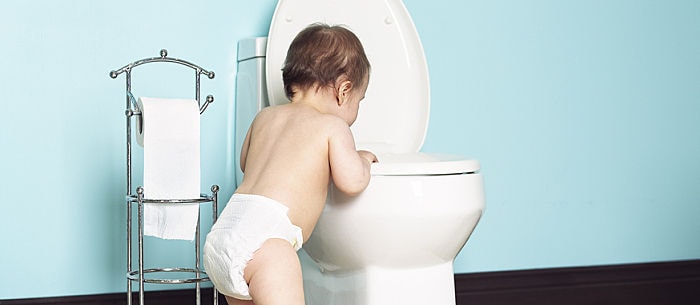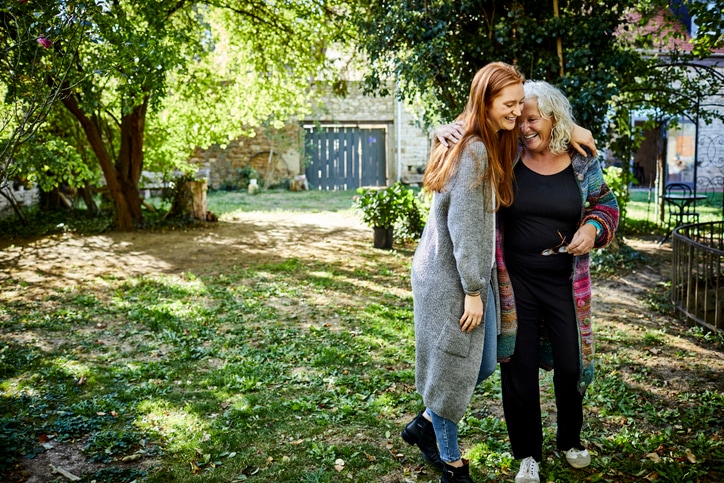Let’s be honest: potty training is one of the more unpleasant aspects of child-rearing.
And all those unrealistic “potty bootcamp” gimmicks aren’t helping things, either.
Take it from me, a mom who used the “quick and dirty” approach with one kid, and the “slow and steady” approach with the other. Not only did the slow and steady method work better, but it also made my family’s lives much, much easier. Needless to say, I’m a believer.
And here are 6 potty-training truths I learned along the way:
- Potty Training Isn’t a One-Size-Fits-All Process
Forget everything that you’ve read about how potty training should go. Forget what your neighbor or mom said they did that “totally worked.” There’s no “right” or “wrong” way to potty train, just the way that fits your child’s needs best. If she’s genuinely interested, she’ll let you know when something’s working and when it’s not.
- Age Is Just a Number
Some kids are ready for potty training as young as 18 months. Others aren’t ready ’till they’re 3 or 4. Don’t stress about the number, though. Barring any medical condition, all kids learn to use the potty eventually. But forcing your child into it before he’s good and ready — or even interested — can have less than ideal outcomes. Instead of obsessing over ages, focus on familiarizing yourself with
the signs he’ll give you once he’s ready
so you know what to look for.
- Using the Potty Should Feel Natural, Not Like a Punishment
Your aim should be to make potty training as pressure-free as possible. Push too hard, and
your child could view using the potty as a punishment to avoid
. Dodge this by incorporating the potty into your child’s day-to-day routine. Leave it in a room she uses frequently, so she gets used to it. If your little one prefers to wear as few clothes as possible — which is normal for toddlers — don’t stop her! She’ll have fewer obstacles to get out of her way when she has to go, and that’ll reduce the number of accidents she has. You can even incorporate your existing reward system to help reinforce these new behaviors.
- The Best Plan Is No Plan at All
Don’t forget that potty training is a process, and every kid learns at his own pace. Setting hard and fast deadlines can create unnecessary pressure and delay things even more. If your kid’s school or camp has such a requirement, definitely start potty training months ahead of his first day. But if you don’t have a deadline to work against, the most ideal potty-training plan is to go into it without a plan.
- Regressions Will Happen, and They’re Completely Normal
Be prepared for regressions. There’ll be days and weeks where your kid will be interested in using the potty. Then, out of nowhere, she’ll absolutely abhor it. Or, she’ll suddenly have five accidents in a week. Take a breath and remember that mistakes are crucial to learning. It’s also okay to go back to diapers part-time, especially if your child is withholding poops. (Constipation is a vicious cycle that you don’t want to enforce in the name of completing potty training ASAP.)
- Humor Is Your Greatest Potty Training Asset
Potty training isn’t exactly fun, but it can be a great opportunity to get to know your child better, deepen your connection and laugh together. This process will be frustrating at times. Help each other laugh through those trying moments — the accidents, the regressions, the bodily fluids that appear in unexpected places — and you’ll establish a positive, stress-free environment that can help your child clear this hurdle faster. Of all the techniques and tools you have at your disposal, humor is the most important…no butts about it. (See what I did there?)
More than anything, the slow and steady approach showed me that there really is no such thing as a “potty training failure.” With all the millions of parenting books, articles, blogs, and “experts” out there telling parents what we should and shouldn’t be doing, this realization came as quite a relief to me. Every child is different, so remember that a technique that works for one may not work for another. As parents and caregivers, all we can really be sure of is that our kids will eventually get out of their diapers in their own time. And that’s more than okay.






